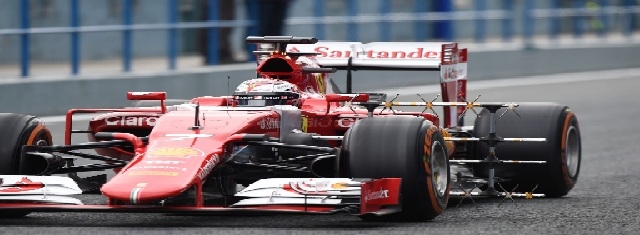Automobiles
INSIDE FORMULA ONE - THE PRACTICE OF TESTING GREW IN IMPORTANCE
UNDERSTANDING F1 RACING

Teams often attach sensors to their cars (Source: Formula 1 - During testing)
As the sport of Formula One racing grew ever more technically demanding, so the practice of testing grew in importance. Much of this testing work happens unseen, deep within the constructors' factories and wind tunnel facilities. Once cars are assembled the more conspicuous type of testing begins, out on race tracks with real drivers at the wheel.
By midway through the first decade of the 21st century, a typical Formula One testing programme had become a major exercise in both manpower and logistics, with many teams using multiple test drivers to take a share of the burden away from the race drivers.
By midway through the first decade of the 21st century, a typical Formula One testing programme had become a major exercise in both manpower and logistics, with many teams using multiple test drivers to take a share of the burden away from the race drivers.
In 2008 the regulations were amended to limit each constructor to 30,000km of testing per season, the majority done during multi-team tests (normally three days in duration) at FIA-approved racetracks around Europe, where any team could elect to pay a portion of the costs and to bring its cars.
The testing allowance was slashed to 15,000km in 2009, with in-season testing banned, effectively limiting teams to just a handful of pre-season tests in February and March.
The testing allowance was slashed to 15,000km in 2009, with in-season testing banned, effectively limiting teams to just a handful of pre-season tests in February and March.
For 2014, teams had the chance to participate in three four-day pre-season tests and a further four two-day tests at tracks that had just hosted Grands Prix. Both will be reduced in future seasons however: from 2015 there will only be two in-season tests, while from 2016 onwards the pre-season will contest of two four-day tests. Much can still be learned from that track time, but with windtunnel testing and CFD simulation work both heavily restricted, the three hours of practice on Grand Prix Fridays remains highly valuable to teams and drivers alike.
Source : Formula 1
Source : Formula 1
Ruby Bird Yasmina Beddou Formula One Racing Flags Testing F1 Circuit Automobile Communication Drivers Team Gps Marshalling System Track
Liability for this article lies with the author, who also holds the copyright. Editorial content from USPA may be quoted on other websites as long as the quote comprises no more than 5% of the entire text, is marked as such and the source is named (via hyperlink).






